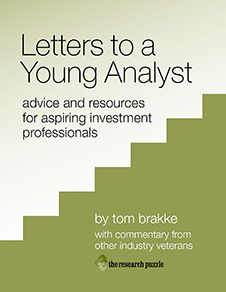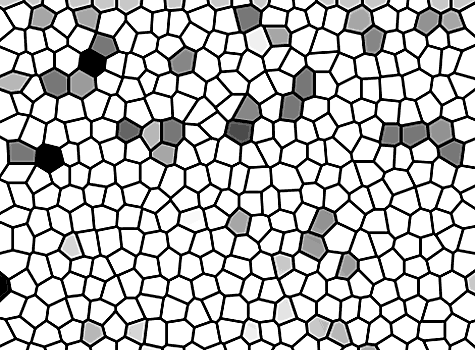
- Monday, December 3rd, 2012
- the new mosaic
-
The attention to illegal insider trading ebbs and flows over time, and it has been flowing the last couple of years. The authorities have gotten more aggressive, targeting expert networks that seemed to almost specialize in inside information, as well as other tippers and tippees.
According to the SEC,SEC | This is from a summary of “The Laws that Govern the Securities Industry.” “Insider trading is illegal when a person trades a security while in possession of material nonpublic information in violation of a duty to withhold the information or refrain from trading.”
Which brings us to “the mosaic theory.” What do you see here?
There really is something there, but you’d have to be amazingly good or amazingly lucky to discern it. Perhaps with a few more tiles filled in you could do it.
Building an investment picture bit by bit is what the mosaic theory is all about. An investor can assemble information from different public and private sources to make a decision — as long as the general principle laid out by the SEC statement above is not violated.
There are endless debates about the definition of “materiality” and other issues, and differences of opinion about where the lines are (or should be) drawn. While there is no doubt that enforcement has been stepped up, regulators have said that they are are not trying to revoke the mosaic theory.SEC | Carlo V. di Florio, the SEC’s director of compliance, gave this speech in 2011.
So, for an investor, it comes down to how you do what you do. If you go looking for trouble, it’s easy to find it. If you are trying to dance as close to the line as you can — or purposefully dance over it — then you’re playing a dangerous game. A more sensible foundation for a long-lasting approach is to hew to the laws and intelligent standards of practice, such as those from the CFA Institute.CFA Institute | This is the entire handbook from the CFA. The start of Standard II covers insider information and the mosaic theory.
However, the “new mosaic” of the title does not refer to that mosaic theory at all, since I don’t think all that much has changed in regards to it. The new mosaic is that which an investor or firm can create through the use of different sources, ideas, inputs, and people that can breathe life into the process of equity analysis.
Consider the image above again, not in terms of a legal theory, but as a visual representation of your investment process. The chances are that you color in the same tiles each time that you face a decision; they create an image in a way that you are used to seeing it.
But what about all the other tiles that you ignore, that never get colored in? They could very well change that picture in ways that you don’t expect. And what about the frame that you have created for your process? What artificial boundaries have you crafted for your approach?
Your investment mosaic should not be predictable or similar to those of others in the crowd. You should see in one tile left untouched by others the image of alpha that it might help to create.
This is the fifth in a series of postings on equity research.the research puzzle | The index of postings is updated as each new one appears.

